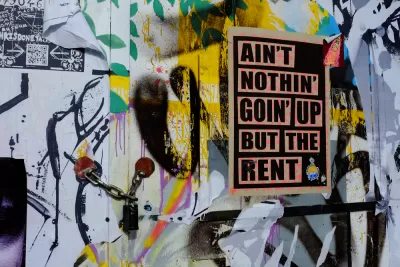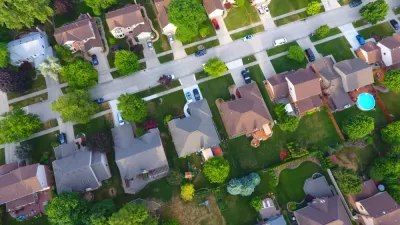The size of the gap between wages and the cost of rent is growing, and spreading. For renters, every corner of the country's housing market is in crisis.

Laura Bliss reports on the findings of the new "Out of Reach" report from the National Low Income Housing Coalition. Here's the big takeaway:
In 2017, the average U.S. worker would need to bring in a whopping $21.21 per hour to reasonably afford a modest two-bedroom apartment. That’s nearly three times the federal minimum wage of $7.25, and roughly 30 percent more than the $16.38 hourly wage that the average U.S. renter brings home.
The report maps that data to provide another stark reality: "there’s not a single state, county, or metro area in which a simple two-bedroom rental is affordable to a person working 40 hours per week, 52 weeks per year, at the local statutory minimum wage." And, "[in] only 12 counties in Washington, Arizona, and Oregon (all states with minimum wages above the federal standard) can that worker afford a modest one-bedroom unit."
Bliss shares a lot more of the numbers included in the report, along with several infographics and maps to illustrate the state of housing affordability in the country.
FULL STORY: Rent Is Affordable to Low-Wage Workers in Exactly 12 U.S. Counties

Maui's Vacation Rental Debate Turns Ugly
Verbal attacks, misinformation campaigns and fistfights plague a high-stakes debate to convert thousands of vacation rentals into long-term housing.

Planetizen Federal Action Tracker
A weekly monitor of how Trump’s orders and actions are impacting planners and planning in America.

In Urban Planning, AI Prompting Could be the New Design Thinking
Creativity has long been key to great urban design. What if we see AI as our new creative partner?

Pedestrian Deaths Drop, Remain Twice as High as in 2009
Fatalities declined by 4 percent in 2024, but the U.S. is still nowhere close to ‘Vision Zero.’

King County Supportive Housing Program Offers Hope for Unhoused Residents
The county is taking a ‘Housing First’ approach that prioritizes getting people into housing, then offering wraparound supportive services.

Researchers Use AI to Get Clearer Picture of US Housing
Analysts are using artificial intelligence to supercharge their research by allowing them to comb through data faster. Though these AI tools can be error prone, they save time and housing researchers are optimistic about the future.
Urban Design for Planners 1: Software Tools
This six-course series explores essential urban design concepts using open source software and equips planners with the tools they need to participate fully in the urban design process.
Planning for Universal Design
Learn the tools for implementing Universal Design in planning regulations.
planning NEXT
Appalachian Highlands Housing Partners
Mpact (founded as Rail~Volution)
City of Camden Redevelopment Agency
City of Astoria
City of Portland
City of Laramie





























